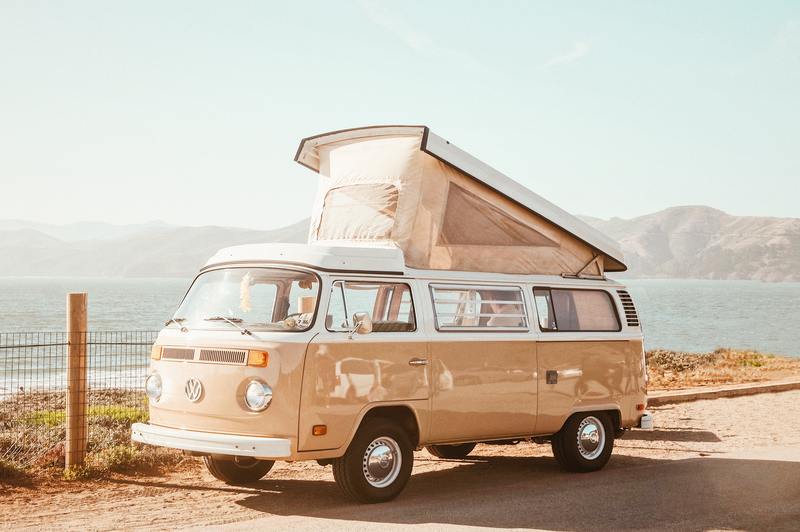Are you having trouble finding ways on how to fix a water damaged camper wall? If yes, then in this article, we will provide you with all the information you need that could help you solve your problem.

What Is A Camper Wall?
An exterior wall, insulation in the middle, and an internal wall make up a three-part sandwich in a camper. They commonly use fiberglass, composite materials, or aluminum for camper exteriors.
Airstream is the most well-known brand that still uses aluminum for its exterior walls. Most outer walls of most other campers are made of fiberglass or composites.
Insulation is then sandwiched between your camper’s inner and outer walls. You will use fiberglass, spray foam, or rigid foam to insulate RVs.
The most prevalent type of insulation in a camper is fiberglass. Moreover, you can measure insulation in “R-Values,” which measure how well the camper is insulated.
What Are Different Types Of RV Interior Wall Materials?
There are three main types of materials that you can use to build the interior walls of your RV, each with its own set of benefits and drawbacks.
1. Compound or composite plywood
Plywood is made up of several thin wood sheets pressed together. Plywood RV interior walls are more common in mid-to high-priced campers. If you want to change the color of an RV interior wall made of plywood, you must first remove any wallpaper, veneer, or paint applied to it
The following are the pros and cons of the compound or composite plywood:
PROS
Plywood is a rigid material. It’s difficult to bend or break, and you’re unlikely to punch a hole in it accidentally. If you acquire a used RV with plywood walls and don’t like the color, you may easily paint over it or cover it with wallpaper of your choice.
CONS
Water doesn’t like plywood, and water damage is a typical concern in RVs. If you have a roof leak or another breach in your wall that allows water to fall, your plywood walls will get very soft very quickly.
Plywood is also prone to mold growth — If you have a severe water leak that soaks through your RV’s interior plywood walls, there’s a reasonable risk that mold will form. To avoid this problem, you must quickly detect and stop water leaks.
2. MDF (Medium Density Fiberboard)
MDF is commonly utilized in the interior walls of RVs. It is made up of sawdust that has been bonded together and sandwiched between two sheets of wood veneer.
The following are the pros and cons of MDF:
PROS
MDF is inexpensive, making it simple to replace interior walls of your RV at a cheap cost. It is lightweight and will help keep your RV’s weight down, which is vital while traveling by car.
MDF is reasonably simple to cut into the forms you’ll need for your RV’s inside walls, which means it is flexible. It’s also versatile in that you can paint over it, add wallpaper, and hang things like family photos on it with relative ease.
CONS
MDF has a shorter lifespan than other RV interior wall materials. It can decay with time because it’s made of glued sawdust, weakening the entire wall.
3. Vinyl
Vinyl has come a long way in recent years and is now a very cost-effective inside wall covering for RVs. Vinyl is a rigid plastic that can withstand a lot of abuse. It is a popular choice for RV interior walls since it is lightweight and simple to install.
PROS
It is low-cost. You may get a huge piece of vinyl for your RV’s inside walls for a reasonable price. If the interior walls of your RV are made of vinyl, you’ve already saved money on your purchase!
CONS
Vinyl is the least durable of all the inside wall materials for RVs. Vinyl, on average, begins to show signs of wear after two years. However, because it is so inexpensive, you can usually replace it several times before paying what you would for other RV interior wall materials.
How To Fix A Water Damaged Camper Wall
Step #1. Locate first the source of leaking water that causes damage to your camper wall. Clean out the dirt, especially molds, and wait for it to completely dry. It will also help you to look for other damages and scan the camper’s wall.
Step #2. After assessing, remove the damaged part. You can seek professional help if you find it difficult for you to do.
Check the floor. Press your hands to indicate which parts are damaged, then replace them with new ones. Replace the seals of the windows if the water damaged camper wall has reached into this situation.
Step #3. Once the camper wall has been completely dry and thoroughly checked and fixed, you may start restoring the water damaged walls by stripping off the wallpapers and replacing them with a new one.
Conclusion
The above information will help in knowing how to fix a water damaged camper wall. If you still can’t properly fix it, it would be best to contact or hire a professional.
